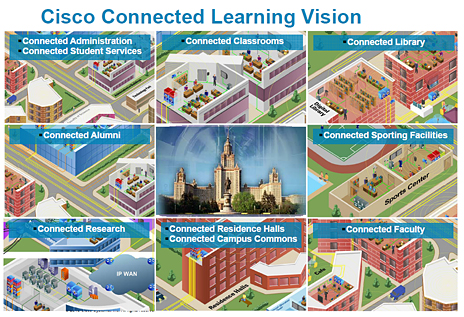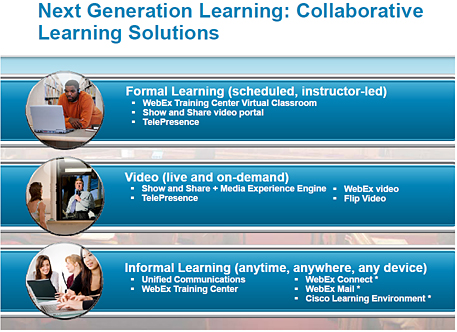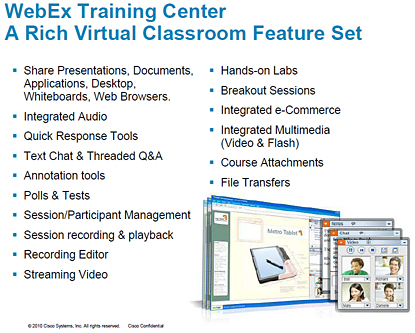The Exodus — via social media — my thanks to Valerie Bock for this item
or
In 2006, CLEAR launched its “Rich Internet Applications for Language Learning” initiative. Web-based tools were designed to offer functionality that is beneficial to language learning, while exploring how technology can enhance language teaching. This article discusses the design principles behind the RIA initiative, explains how the tools are intended to be used, and shares some examples of classroom use.
.
From DSC:
The article mentions tools such as Wimba (now a part of Bb Collaborate), VoiceThread, and others.
Storytelling meets Web 2.0 — from Instructional Design Fusions
.
Google Tech Talk
April 6, 2010
ABSTRACT
Presented by Dr Matthew Todd, School of Chemistry, University of Sydney.
Science shaped itself in the founding days of learned societies: individuals or teams competed, in secret, with paper-based communication in subscription journals. Why are we all still doing science like this? The internet has had a major impact in our sharing of data by traditional means, but it has not yet radically changed the way we actually perform science.
.
.
Here’s a list of the projects mentioned in the video:
Praziquantel is being used in the treatment of schistosomiasis, a parasitic infection spread by freshwater snails in sub-Saharan Africa.
The Gates Foundation is funding an operational research program – SCORE to control and eliminate Neglected Tropical Diseases.
This operates out of Imperial College, London and is led by Professor Alan Fenwick OBE.
The Cathedral model is where a professor and students conduct funded research to develop a solution whereas the Bazaar model invites other people to collaborate in an Open source way to develop a solution. Firefox, Chrome, Wikipedia are all Bazaar models.
Open Science involves publishing in real time and letting people respond as they see fit and then collaborate in real time.
The UsefulChem Project led by the Jean Claude Bradley at Drexel University – aimed at producing molecules that will be used to treat malaria. Bradley is a proponent of and practises Open Notebook Science.
Open Source Drug Discovery: http://www.osdd.net/ – OSDD is a CSIR Team India Consortium with Global Partnership with a vision to provide affordable healthcare to the developing world.
Open WetWare: http://openwetware.org/wiki/OpenWetWare:About – OpenWetWare is an effort to promote the sharing of information, know-how, and wisdom among researchers and groups who are working in biology & biological engineering.
The Open Dinosaur Project: http://opendino.wordpress.com/ (founded to involve scientists and the public alike in developing a comprehensive database of dinosaur limb bone).
Chemspider: http://www.chemspider.com/ – ChemSpider links together compound information across the web, providing free text and structure search access of millions of chemical structures.
Foldit is a revolutionary new computer game enabling you to contribute to important scientific research.
NCBI (National Center for Biotechnology Information): http://www.ncbi.nlm.nih.gov/ – advances science and health by providing access to biomedical and genomic information.
GenBank: http://www.ncbi.nlm.nih.gov/genbank/ – is the NIH genetic sequence database, an annotated collection of all publicly available DNA sequences.
The Tropical Disease Initiative aims to apply an open-source collaborative approach to biological and medical research for tropical diseases.
The Synaptic Leap: – Open Source Biomedical Research.
Stack Overflow allows you to post code and ask for help on a problem.
Chempedia is a free service for uniquely identifying and naming chemical substances.
CML (Chemical Markup Language) is an open standard for representing molecular and other chemical data. It includes XML Schema, source code for working with CML data, and was devised by Peter Murray-Rust who worked with Microsoft to develop a Chem Word Add-in enabling a Word document to be searched and the chemical information in it to be automatically annotated and extracted. When you hover over a word, you get a structure and you can change the structure.
Chemicalize.org – a public web resource developed by ChemAxon.
Connected they write: The lure of writing on the web — from dmlcentral.net by Raquel Recuero
The rise of the networked enterprise: Web 2.0 finds its payday — Dec 2010 from McKinsey & Company by Jacques Bughin and Michael Chui
McKinsey’s new survey research finds that companies using the Web intensively gain greater market share and higher margins.

.


.

.
.

.
. .

From http://www.educause.edu/ELI/EDUCAUSELearningInitiative/SeekingEvidenceofImpact/206622
As the pace of technology change continues unabated, institutions are faced with numerous decisions and choices with respect to support for teaching and learning. With many options and constrained budgets, faculty and administrators must make careful decisions about what practices to adopt and about where to invest their time, effort, and fiscal resources. As critical as these decisions are, the information available about the impact of these innovations is often scarce, uneven, or both. What evidence do we have that these changes and innovation are having the impact we hope for?
What are the current effective practices that would enable us to collect that evidence? With the advent of Web 2.0, the themes of collaboration, participation, and openness have greatly changed the teaching and learning landscape. In light of these changes, what new methods for collecting evidence of impact might need to be developed?
Established practices and good data have made inroads in these areas. Often, however, they are scattered, disconnected, and at times in competition, making it challenging for the teaching and learning community to discover and compare their merits. Bringing these practices together and encouraging the invention of new ones will enable more institutions to measure impacts and produce data, providing a richer, evidence-based picture of the teaching and learning landscape on both the national and international level. The ELI announces a program intended to bring the teaching and learning community into a discussion about ways of gathering evidence of the impact of our innovations and current practices.
We hope to bring all types of higher education institutions and professional associations into a conversation on this theme. We envision an inclusive discussion that includes faculty members, instructional support professionals, librarians, students, and research experts in a collaborative exchange of insights and ideas.
Join us as we
Established practices and good data have made inroads in these areas. Often, however, they are scattered, disconnected, and at times in competition, making it challenging for the teaching and learning community to discover and compare their merits. Bringing these practices together and encouraging the invention of new ones will enable more institutions to measure impacts and produce data, providing a richer, evidence-based picture of the teaching and learning landscape on both the national and international level. The ELI announces a program intended to bring the teaching and learning community into a discussion about ways of gathering evidence of the impact of our innovations and current practices.
We hope to bring all types of higher education institutions and professional associations into a conversation on this theme. We envision an inclusive discussion that includes faculty members, instructional support professionals, librarians, students, and research experts in a collaborative exchange of insights and ideas.
Join us as we
Students Beg for Tuition Money Online — from The Chronicle by Sophia Li
As students’ budgets grow tighter than ever, some are resorting to an unusual means to support their college educations: begging for tuition help from strangers online.
A Web site called SponsorMyDegree.com has drawn about 10,000 users since its creation in 2008 by a Colorado couple, Henner and Lilac Mohr. Students can sign up free and create a profile with information about themselves: photos, their hobbies, their career aspirations, the reasons underlying their pleas for help.
Also see:
TeacherStudio Brings Web 2.0 Tools to Professional Development — from The Journal by Scott Aronowitz
Web 2.0 resources — from 1 to 1 Schools
Web 2.0’s top 1,000 list is a great resource for web 2.0 tools. The site is very user friendly, and it is easy to scan the applications, which are listed by topic. Those topics include audio, blogging, bookmarking, calendar, chat, collaboration, communication, design, filesharing, knowledge, multimedia, news, writing and many more. This site may be very helpful for educators who want to use web 2.0 applications, but are not aware or uncertain of what tools are actually out there. It will also be helpful for ed techies who are always looking to expand their toolbox of resources.
From DSC, also see: